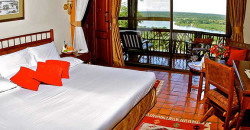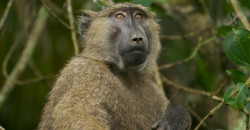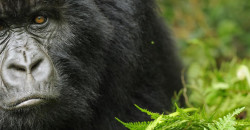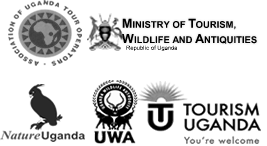Mountain Gorilla Tracking
GORILLA TRACKING
Gorilla trekking is one of the most interesting activities carried out in Uganda, Rwanda and Congo, when planning a vacation in Africa, be sure not to miss out on this incredible experience in the wild because this activity is the major reason as to why people visit these countries. The activity involves watching the way of life of these endangered species with an almost human character, the way they interact or communicate with each other, how they care for their little ones, their movements and any other related aspect. As a company serving in the tourism sector, Abacus African Vacations majorly organizes gorilla tours in these respective countries. Bwindi Impenetrable Forest National park alone holds 400 individual Mountain Gorillas and the gorilla Massif (Mgahinga Gorilla National Park in Uganda, Volcanoes National Park in Rwanda and Virunga National Park in Democratic Republic of Congo) holding 601 individual Mountain Gorillas.
The price of a gorilla permit in Uganda is USD 600 and USD 1500. It is advisable to book your permit in advance because the demand for these permits is extremely high. If you book your safari with us, you are guaranteed an organized and safe gorilla safari. Only 8 people are allowed to track a gorilla family in a day.
In Uganda, 13 gorilla families are tracked, 12 of which are in Bwindi and 1 in Mgahinga. There are four tracking sectors in Bwindi, Buhoma, Ruhija, Rushaga and Nkuringo.
Buhoma area: This tracking Sector has three habituated groups namely; Mubare group which was the first habituated group, Habinyanja group from which the Rushegura group broke and Rushegura group which is a very large group in the area.
Ruhija area: This tracking Sector has three habituated groups which include; Oruzogo group which is a large group comprising of exciting and playful juveniles, Bitukura group which is among the newest groups in Bwindi and fast at learning and Kyaguliro group which was set aside for research and whose leader was struck by lightning leading to separation as it was being led by an inexperienced young silverback.
Rushaga area: This tracking Sector has five groups, which include; Nshongi group which is one of the largest groups in the forest, Mishaya group an amazing and lively group, Busingye group which is just a new group and Bweza group which broke away from Nshongi group due to disputes, and Kahunjye which is a very exciting group.
Nkuringo area: Nkuringo group is the only group habituated here and it lies on a tough terrain. This explains why tracking this group is a tough but enjoyable experience. It requires energy.
In Mgahinga Gorilla National Park, Nyakagezi group is the only habituated group tracked. It at times travels to Congo or Rwanda that is why it is sometimes unavailable in this park.
Volcanoes national park in Rwanda also has 11 habituated gorilla families and each has different characteristics from the other but almost similar to those of the Uganda habituated groups. For example Karisimbi and Kwitonda groups in Rwanda are hard to track because of the tough terrain on which they lie just like Nkuringo group in Uganda, the Ugenda group in Rwanda that is always on the move just like the Nyakagezi group in Uganda, the Susa group known for its playful teens in Rwanda just like Oruzogo group in Uganda, Bwenge group known for its wisdom in Rwanda just like Bitukura group which is quick at learning in Uganda. The other groups include; Titus group named after the silver back Titus who lost majority of his relatives to poachers, Amaharo group known for its peaceful nature, Umubano group that lives together all the time, Sabinyo group which is the easiest group to track, Agashya group which moves deeper to the mountain when it senses danger and Hirwa group a lucky group blessed with twins.
In both countries, gorilla trekking takes place all year round. Since the activity takes place in rain forests, rain usually falls in the morning or at night. Even during dry seasons, rain at times falls therefore you do not have to worry about the weather. The peak season for tracking gorillas are the months of June, July, August, September, December January and February therefore if you opt for less crowd tracking you should choose the other months of the year. An advantage of tracking during peak periods is the fact that lodges offer discounted prices most especially those on the upper market.
It is advisable to carry boots, long trousers, long sleeved shirts and back packs which are water proof plus walking sticks to help you through the steep paths during trekking. Do not forget to carry your cameras to take photographs and keep memories of this incredible adventure. Note that flash photographs are not allowed. Pack sweaters to warm you up during cold mornings and nights in the tropical rain forests and the areas around.
Time spent tracking a gorilla group is one hour in both Uganda and Rwanda and this is subject to rules and guidelines which are given during the pre-gorilla tracking session and they are meant to keep people and mountain gorillas safe during actual tracking. They will help trackers and gorillas feel secure and be healthy. Because these endangered species are subject to communicable diseases such as flu, tuberculosis, diahorea and any other air born disease, no one will be allowed to track if he or she is infected with any of these diseases. The minimum age for tracking is 15years in both countries. You should keep a distance of 6 to 7 meters from the gorillas and ensure to keep your voices low or silent to avoid interrupting them, do not take food or drinks nor do you have to smoke in front of the gorillas, do not leave anything that you carried behind during trekking because it will pollute the environment, when a gorilla tries to attack you, do not run but rather stay calm, always stay as a team in their presence, do not touch the gorillas. Your guide will give you any extra information you need during or before tracking and endeavor to be observant enough because you will be able to view other creatures such as birds and primates such as colobus monkeys and baboons during your trek. This way, you will be able to hit two birds with one stone
Plenty of accommodation types are available around the three parks. One needs not to worry because we are ready to book clients a hotel/lodge of their preference which may be budget, midrange and luxury.









